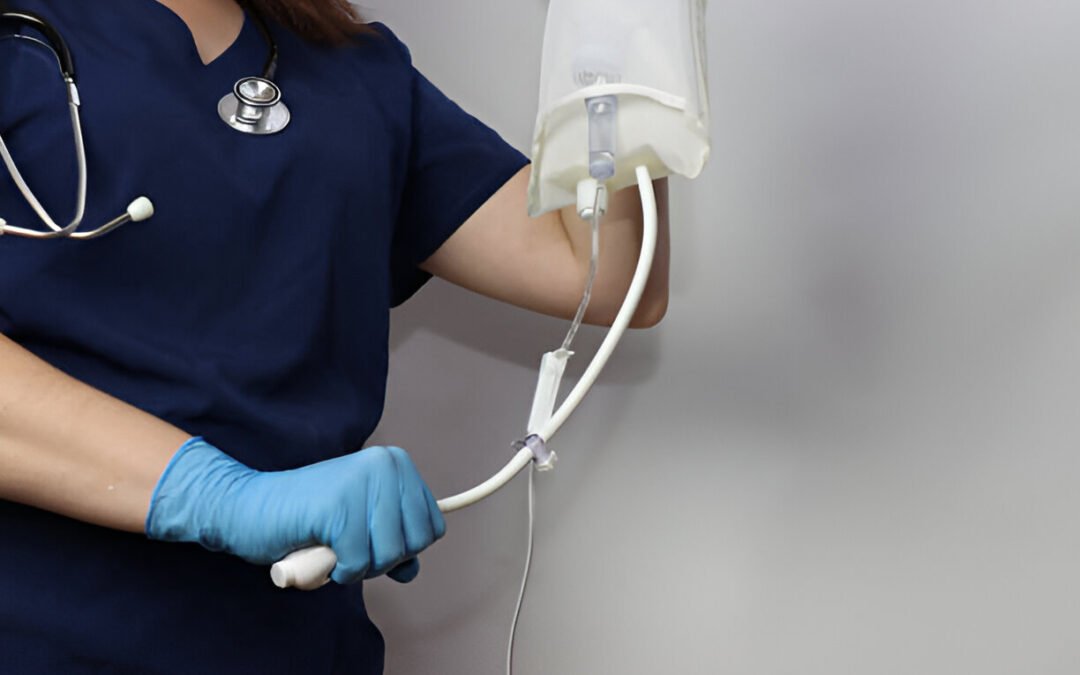Electrolytes in an IV Bag: Your Ultimate Hydration Solution
Introduction
Electrolytes are essential minerals in the body that carry an electric charge, playing a critical role in various physiological functions. Common electrolytes include sodium, potassium, calcium, magnesium, and chloride. They help maintain pH balance, regulate blood pressure, and support hydration.
IV therapy is a medical technique used to deliver fluids and nutrients directly into a vein through an IV bag. This method is highly effective for hydration, especially during dehydration or illness. The relevance of IV therapy to hydration cannot be understated as it ensures rapid replenishment of vital minerals and fluids.
This article aims to provide an in-depth look at the electrolytes in an IV bag. You will learn about what they are, why you need them, and how they contribute to your overall health. Whether you’re curious about the benefits of electrolyte solutions or considering IV therapy for hydration, this guide offers valuable insights tailored for you.
To understand more about what goes into an IV bag and the different types of IV fluids that support health and wellness, check out this detailed resource on What’s Inside an IV Bag?.
Additionally, if you’re interested in exploring advanced treatments like NAD+ IV therapy, which has been shown to enhance energy and focus, we have comprehensive information available on that as well.
Understanding Electrolytes
Electrolytes are essential minerals in the body that carry an electric charge, playing a fundamental role in various physiological functions. These minerals include:
- Sodium: Regulates blood pressure and fluid balance.
- Potassium: Vital for heart health and muscle function.
- Calcium: Important for bone health and muscle contractions.
- Magnesium: Supports nerve function and energy production.
- Chloride: Helps maintain pH balance in the body.
The primary role of electrolytes is to ensure the proper functioning of cells and organs. They enable electrical impulses to be transmitted across cells, which is crucial for muscle contractions, heartbeats, and nerve signaling.
Maintaining electrolyte balance is critical for overall health. Imbalances can lead to various symptoms such as:
- Dehydration
- Muscle cramps
- Irregular heartbeat
- Fatigue
- Nausea
Electrolytes are not only vital for physical performance but also influence cognitive functions. While it’s rare, there’s a question many ask: do electrolytes keep you awake? In cases of significant electrolyte imbalance, symptoms like fatigue or alertness may occur. However, under normal circumstances, electrolytes themselves don’t directly affect sleep patterns.
Understanding these minerals’ roles helps explain their inclusion in IV therapy, where they are administered efficiently to support hydration and recovery. IV Vitamin Therapy is one such method that not only supports hydration but can also aid in weight loss by boosting energy, controlling appetite, and enhancing metabolism. Another popular IV therapy option is the Myers’ cocktail, which is known for its effectiveness in replenishing essential vitamins and minerals in the body.
The Role of Electrolytes in IV Therapy
IV therapy involves administering fluids directly into a vein, allowing for immediate absorption and rapid effect. Commonly used in medical settings, this method is especially effective for electrolyte replacement in cases of severe dehydration or illness.
How IV Therapy Works and Its Applications
- Direct Delivery: Fluids and electrolytes are delivered straight into the bloodstream, bypassing the digestive system.
- Quick Rehydration: Ideal for patients who cannot consume fluids orally due to nausea or severe dehydration.
- Versatility: Used in diverse situations such as post-surgery recovery, treatment of heatstroke, managing chronic illnesses, or even in stress relief scenarios.
Importance of Replenishing Electrolytes Through IV Bags
During dehydration or illness, the body loses critical electrolytes like sodium, potassium, calcium, and magnesium. An electrolyte IV bag helps restore these vital minerals:
- Sodium: Essential for maintaining fluid balance and blood pressure.
- Potassium: Crucial for heart health and muscle function.
- Magnesium: Supports nerve function and energy production.
Benefits of Using Electrolyte-Rich Solutions in IV Therapy
- Rapid Rehydration: An IV bag for dehydration provides an efficient way to quickly restore fluid levels.
- Balanced Electrolytes: Ensures that electrolyte levels are replenished appropriately, reducing risks associated with imbalances.
- Customizable Treatment: Solutions can be tailored to meet the specific needs of the patient, whether they require more sodium for blood pressure regulation or potassium for cardiac health.
Questions such as “does an iv hydrate you?” and “how many bags of iv fluid for dehydration?” often arise. The answer depends on individual circumstances but typically ranges from one to several bags based on severity. The cost also varies; factors such as location and specific needs will influence how much an IV bag costs.
Using electrolyte-rich solutions in IV therapy provides immediate benefits, addressing both hydration and electrolyte imbalances simultaneously. This dual-action approach makes it a go-to solution for many healthcare scenarios.
Moreover, group packages for IV therapy are available which can be beneficial for families or groups needing similar treatments. For elderly patients who may have different hydration needs, specialized elderly IVs are also offered. If you have any questions or need further information about our services, feel free to contact us.
Types of Electrolytes in IV Bags
Electrolytes play crucial roles in IV therapy ensuring effective hydration and physiological balance. Here are some key electrolytes commonly found in IV bags:
Sodium
Sodium is a primary electrolyte in IV fluids crucial for regulating blood pressure and fluid balance. It helps retain water in the body making it essential during dehydration.
Potassium
Potassium is another key component found in potassium IV bags. Vital for heart health potassium ensures proper cardiac function and muscle contractions. It also helps maintain cellular integrity and nerve transmission.
Calcium
Calcium is often included in IV therapy for its role in bone health and muscle function. Calcium aids in blood clotting stabilizes cell membranes preventing muscle spasms cardiac arrhythmias.
Magnesium
Magnesium supports nerve function energy production making it another essential mineral included intravenous therapies particularly beneficial maintaining overall physiological balance preventing cramps fatigue irregular heart rhythms among other symptoms associated deficiencies magnesium levels within body
Normal Saline
Normal saline common intravenous fluid containing 0 . 9 % sodium chloride widely used treat dehydration replenish lost maintain electrolyte balance
Lactated Ringer ‘ s Solution
Lactated Ringer ‘ s solution another prevalent option comprising sodium chloride potassium calcium lactate closely mimics body’s plasma making suitable surgery patients those significant fluid loss
IV drip bags containing these electrolytes ensure patients receive precise amounts essential minerals support recovery understanding specific roles help appreciate inclusion fluid impact overall health
For those seeking such specialized hydration solutions [IV Me Up ]( https : / / ivmeup . com ) offers mobile intravenous services Orange County provide customized right doorstep boost immune system recover faster even enhance beauty expert drips Additionally MIC IM injections targeted approach individuals looking kickstart weight loss journey receiving essential through
Symptoms and Risks Associated with Electrolyte Imbalance
Electrolyte imbalances can manifest in various ways, often reflecting the effects of dehydration. Here are some common symptoms to be aware of:
Common Symptoms of Imbalance
- Muscle Cramps: Often a sign of a lack of essential electrolytes like sodium and calcium.
- Fatigue: Feeling constantly tired or sluggish may indicate an imbalance, especially if persistent.
- Irregular Heartbeat: The heart relies on proper electrolyte function, and when levels are off, it can lead to abnormal heart rhythms.
- Nausea and Vomiting: These symptoms can further deplete electrolytes and worsen the condition.
- Confusion and Irritability: Changes in cognitive abilities can also be affected by imbalances.
Health Risks of Untreated Imbalances
If left untreated, imbalances during or after therapy can pose serious health risks. Here are potential complications:
- Cardiac Issues: Severe electrolyte levels can lead to life-threatening conditions.
- Neurological Problems: Extremely high or low sodium levels may result in seizures or coma.
- Muscle Weakness and Spasms: Persistently low levels of certain electrolytes can impair muscle function.
- Bone Disorders: Chronic deficiency may weaken bones over time.
Importance of Monitoring Levels During Therapy
To reduce risks, it’s crucial to keep track of electrolyte levels while administering IV therapy. For example, detox drips aid in restoring balance by eliminating toxins that might be causing imbalances. Regular monitoring ensures that electrolyte levels are maintained, preventing complications and promoting effective recovery.
Exploring Advanced Treatments for Optimal Health
In addition to monitoring, considering advanced treatments like NAD therapy can be beneficial for enhancing cellular health. Before proceeding with new therapies, a comprehensive understanding is important. Consulting healthcare professionals provides valuable insights tailored to specific needs.
Ensuring Patient Consent and Privacy Compliance
When implementing treatments, it’s critical to obtain proper patient consent and complete appropriate HIPAA forms. This step ensures privacy protection and compliance with legal regulations throughout the course of treatment.
Hydration Recovery Through Fluids
How IV Therapy Contributes to Hydration Recovery
Intravenous therapy is a direct method to deliver essential nutrients into the bloodstream, bypassing the digestive system for rapid absorption. When administered quickly:
- It rapidly restores hydration, crucial in severe dehydration caused by illness or physical exertion.
- It delivers necessary electrolytes, ensuring the body maintains proper function from muscle contractions to nerve signaling.
The composition often includes a blend of water, salts, and sometimes glucose to provide energy while correcting imbalances causing symptoms like dizziness, fatigue, and cramps.
Recommended Frequency and Amount for Administration
The amount and frequency depend on various factors including:
- Severity: Mild cases may require just one session while severe cases necessitate multiple sessions over an extended period.
- Individual Factors: Age, health status, and the cause of imbalance play significant roles in determining the required dosage.
Medical professionals typically assess these variables before recommending a treatment plan. For instance:
- One session may suffice for mild dehydration, addressing immediate needs effectively.
Conclusion
Electrolyte imbalances should not instill fear but rather awareness about their potential impact on health. By recognizing symptoms early and seeking appropriate treatment through monitored IV therapy or advanced options when needed, individuals can manage their electrolyte levels effectively. Ensuring patient consent and maintaining privacy compliance further supports a safe therapeutic environment. With professional guidance and tailored approaches, optimal health through balanced hydration recovery is achievable.

